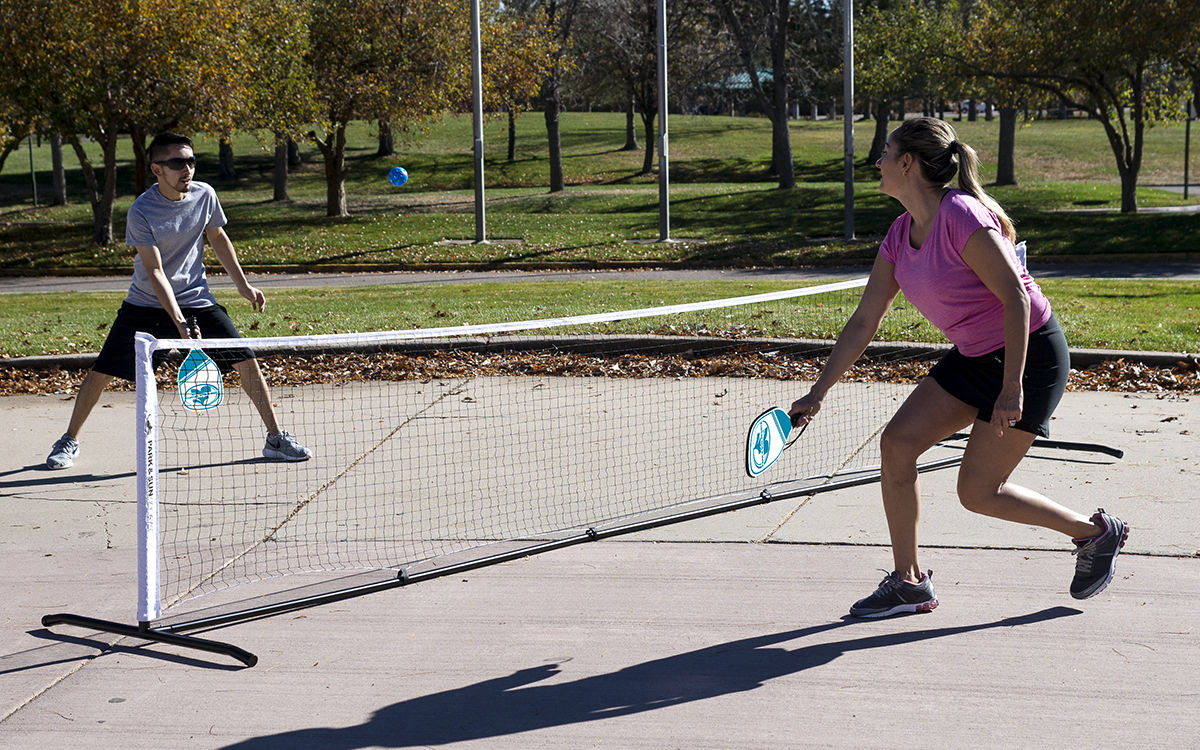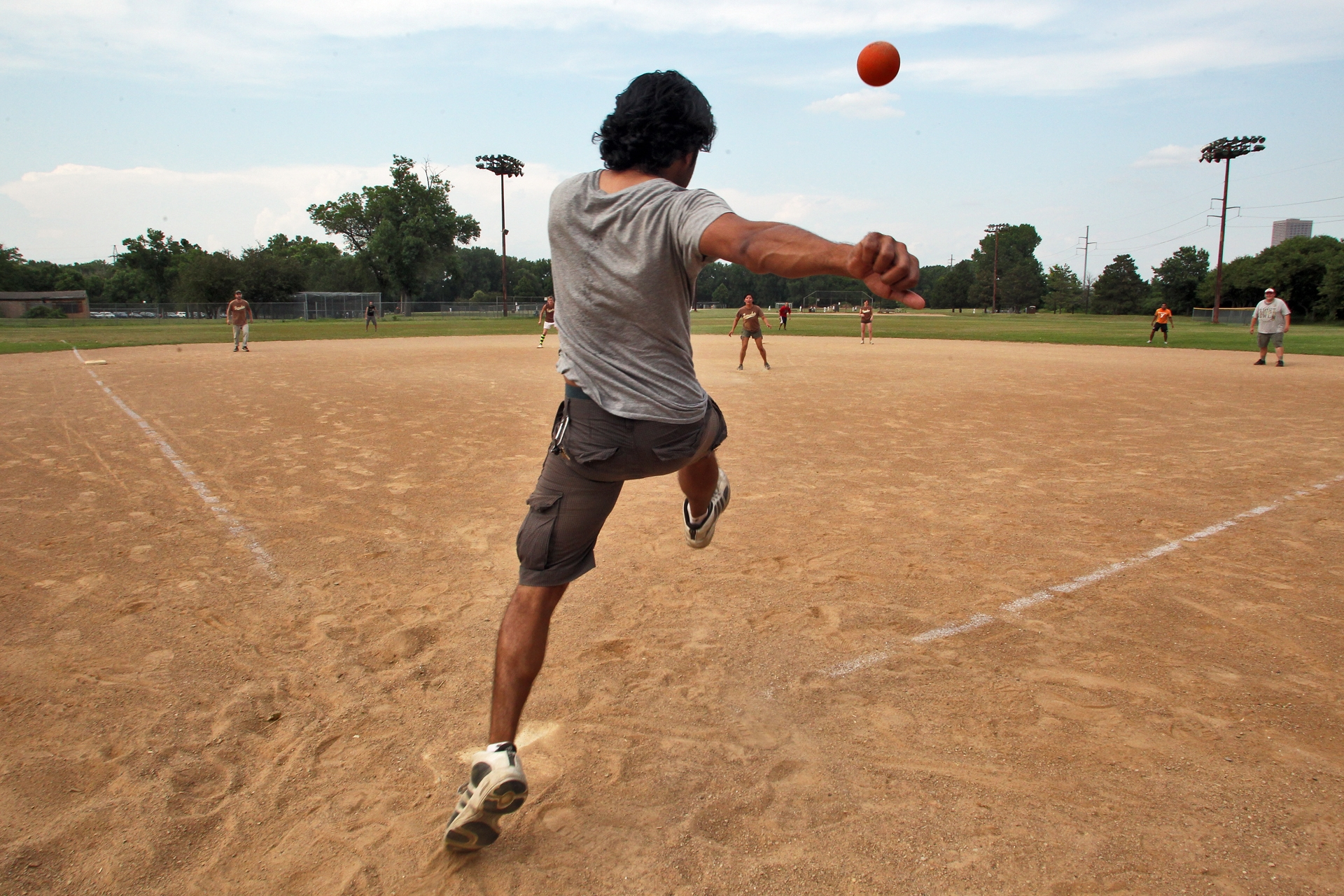Introduction
Pickleball and badminton, two racquet sports often compared due to their similarities, share a common foundation of fast-paced action and strategic gameplay. While both sports involve hitting a ball or shuttlecock over a net with a racquet, they possess distinct characteristics that set them apart. Pickleball, a relatively recent addition to the world of racquet sports, has gained widespread popularity for its accessibility and dynamic play. Similarly, badminton, with its rich history and global following, offers a unique blend of finesse and athleticism that captivates players and spectators alike.
At first glance, the parallels between pickleball and badminton are evident: both are played on a court divided by a net, require quick reflexes, and emphasize agility and precision. However, a closer examination reveals nuanced differences in equipment, rules, and playing style that distinguish the two sports. While badminton features lightweight shuttlecocks and long, narrow courts, pickleball utilizes a larger, perforated ball and a compact court with lower nets. These differences not only impact the dynamics of gameplay but also influence the strategies and techniques employed by players.
Origins and Evolution
Pickleball originated in the United States in 1965, when Joel Pritchard, Bill Bell, and Barney McCallum created the game to entertain their families. It started as a backyard pastime but quickly gained popularity and evolved into a competitive sport with standardized rules and equipment. Badminton, on the other hand, has a much older history, dating back to ancient civilizations in Asia. It was formalized in the mid-19th century in England and has since become an Olympic sport with a global following.
The inception stories of Pickleball and Badminton unveil intriguing narratives reflective of their respective cultural contexts. Pickleball emerged as a lighthearted backyard activity in the United States during the mid-20th century, blending elements of various sports to create a unique pastime. In contrast, Badminton boasts a lineage stretching back centuries, with roots in ancient civilizations across Asia. It underwent formalization in England in the 19th century, evolving into an internationally recognized sport with a rich competitive history.
Rules and Gameplay
One of the fundamental differences between pickleball and badminton lies in their rules and gameplay. Pickleball is typically played on a smaller court than badminton, with a lower net and a solid paddle instead of a racket. The serving in pickleball is underhand, and players must allow the ball to bounce once before volleying. Badminton, on the other hand, is played on a larger court with a higher net, and the shuttlecock must be hit over the net without touching the ground. The serving technique in badminton is overhand, and players can smash the shuttlecock with great force.

Pickleball – Equipment Variances
Another distinguishing factor between pickleball and badminton is the equipment used. In pickleball, players use solid paddles made of wood, graphite, or composite materials. The ball used in pickleball is similar to a wiffle ball, with strategically placed holes to reduce its speed and increase its bounce. In badminton, players use lightweight rackets usually made of graphite or carbon fiber. The shuttlecock, or birdie, is made of feathers or synthetic materials and is designed to have aerodynamic properties for fast-paced rallies.
The equipment utilized in Pickleball and Badminton plays a pivotal role in shaping the dynamics of each game. Pickleball employs solid paddles crafted from wood, graphite, or composite materials, offering players control and maneuverability during gameplay. The ball used in Pickleball features perforations, moderating its speed and bounce for strategic play. In contrast, Badminton relies on lightweight rackets constructed from advanced materials like carbon fiber, enabling swift swings and deft shots. The shuttlecock in Badminton, whether feathered or synthetic, facilitates high-speed exchanges and nuanced trajectories.
Physical Demands
Both pickleball and badminton require agility, coordination, and cardiovascular endurance, but they place different physical demands on players. Pickleball is often described as a less strenuous sport than badminton, as the court is smaller, and the pace of play is slower. However, pickleball still requires quick reflexes and precise shot placement to outmaneuver opponents. Badminton, on the other hand, is known for its fast-paced rallies and explosive movements, requiring players to sprint, jump, and change direction rapidly.
Cultural Significance
Pickleball and badminton have different cultural significance and demographics of players. Pickleball has gained popularity primarily in North America, particularly among older adults looking for a low-impact recreational activity. It is often played in community centers, retirement communities, and parks, fostering a sense of social connection and camaraderie. Badminton, on the other hand, has a strong following in Asia, Europe, and parts of North America, with a competitive circuit that includes international tournaments and professional players. It is also a popular recreational sport in schools, clubs, and recreational facilities worldwide.
Rules and Gameplay Dynamics
Distinct rule sets and gameplay mechanics distinguish Pickleball from Badminton, shaping the experiences of players in unique ways. Pickleball features a compact court with a low net, promoting strategic volleys and close-quarter exchanges. Serving is executed underhand, and players must allow the ball to bounce once before returning it. Conversely, Badminton unfolds on a larger court with a higher net, facilitating swift rallies and aerial maneuvers. Serving is typically done overhead, and players strive to keep the shuttlecock airborne, emphasizing agility and precision.
Physical Exertion and Skill Requirements
While both Pickleball and Badminton demand physical prowess and tactical acumen, they impose distinct challenges on players. Pickleball’s compact court and slower pace appeal to a broader demographic, emphasizing finesse over sheer athleticism. Players navigate the court with precision, relying on strategic shot placement to outmaneuver opponents. Conversely, Badminton’s fast-paced rallies and dynamic movement patterns demand explosive speed, agility, and reflexes. Players engage in rapid exchanges, executing quick footwork and precise strokes to gain the upper hand. Both Pickleball and Badminton impose distinct physical demands and skill requirements on players, necessitating adaptability and proficiency in various aspects of gameplay.
Pickleball’s slower pace and emphasis on shot placement appeal to a wide demographic, fostering strategic thinking and finesse. Players navigate the court with precision, capitalizing on opportunities to outmaneuver opponents through controlled rallies. In contrast, Badminton’s fast-paced exchanges and dynamic movement patterns demand explosive speed, agility, and reflexes. Players engage in rapid footwork and swift strokes, aiming to outpace and outwit their adversaries.
Cultural Significance and Global Appeal
The cultural significance and global appeal of Pickleball and Badminton reflect diverse sociocultural landscapes and demographic preferences. Pickleball has witnessed a surge in popularity, particularly in North America, as an inclusive and accessible recreational activity. It fosters social connections and community engagement, attracting players of all ages and skill levels. In contrast, Badminton enjoys widespread recognition and fervent participation across Asia, Europe, and other regions. It boasts a robust competitive circuit, featuring elite athletes and international tournaments that captivate audiences worldwide.
Historical Roots and Evolution
Pickleball and Badminton trace their origins to different times and places, illuminating diverse paths of development. Pickleball’s inception in the mid-20th century stemmed from the creative experimentation of Joel Pritchard, Bill Bell, and Barney McCallum in the United States, as they sought to devise a game that could engage players of all ages and skill levels. Conversely, Badminton boasts a lineage dating back centuries, with roots entrenched in ancient civilizations across Asia. Its formalization in England during the 19th century propelled it onto the global stage as a structured and competitive sport.
Rule Variations and Gameplay Strategies
The rule sets governing Pickleball and Badminton play a pivotal role in shaping the dynamics of each game, influencing player strategies and tactical approaches. Pickleball unfolds on a compact court with a low net, promoting close-quarters exchanges and strategic positioning. Serving is executed underhand, and players must allow the ball to bounce once before volleying. In contrast, Badminton encompasses a larger court with a higher net, facilitating swift rallies and aerial maneuvers. The overhead serve is a hallmark of Badminton, requiring precision and finesse to initiate rallies effectively.

Equipment Diversity and Performance Impact
The equipment utilized in Pickleball and Badminton serves as a critical determinant of gameplay dynamics and player performance. Pickle-ball paddles, fashioned from wood, graphite, or composite materials, offer a blend of control and power, enabling players to execute a variety of shots with finesse. The ball used in Pickleball features perforations, moderating its flight and bounce for strategic play. Conversely, Badminton rackets, crafted from lightweight materials such as carbon fiber, facilitate swift swings and deft strokes. The shuttlecock’s aerodynamic design in Badminton ensures precise trajectory and responsiveness during rallies.
Cultural Significance and Community Engagement
The cultural significance and community engagement surrounding Pickleball and Badminton underscore their diverse appeal and sociocultural relevance. Pickle-ball has witnessed a surge in popularity, particularly in North America, as a recreational activity that promotes inclusivity and social interaction. Its accessibility and low-impact nature have endeared it to players of all ages and backgrounds, fostering vibrant communities and fostering friendships. Conversely, Badminton enjoys widespread recognition and fervent participation across Asia, Europe, and other regions, with a rich competitive circuit that showcases elite talent and inspires enthusiasts worldwide.
Conclusion
While pickleball and badminton share some similarities as racket sports played with a ball or shuttlecock, they are distinct games with their own rules, equipment, gameplay, physical demands, and cultural significance. Pickleball is characterized by its smaller court, solid paddles, and slower pace, making it accessible to a wide range of players, particularly older adults. Badminton, on the other hand, is known for its fast-paced rallies, lightweight rackets, and explosive movements, attracting competitive athletes and enthusiasts worldwide. Whether you prefer the leisurely pace of pickle-ball or the adrenaline rush of badminton, both sports offer opportunities for fun, fitness, and social interaction.











